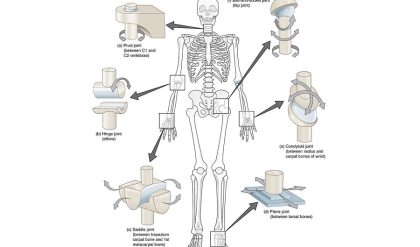blood circulation The circulation of blood refers to its continual flow from the heart, through branching arteries, to reach and traverse the microscopic vessels in all parts of the body, reconverging in the veins and returning to the heart, to flow thence through the lungs and back to the heart to start the circuit again. This uninterrupted movement of the blood is necessary to maintain the supply of oxygen from the lungs and nutrients from the gut, as well as for the distribution of hormones, many other chemicals, water, and heat, and the delivery of waste for excretion. The 5 litres of blood contained in the blood vessels of a typical adult at rest complete the circuit in about one minute: the blood recirculates 1500 times each day even without any exercise to speed it up.
The beginning of the modern concept of the circulation of blood is attributed in Western society to William Harvey, who, in a treatise published in 1628, Exercitatio anatomica de motu cordis et sanguinis, presented convincing evidence that blood flowed in arteries out from the heart to the tissues and returned back along veins. He did not know how blood passed from arteries to veins, as this was long before Malpighi of Bologna discovered the microscopic capillaries which connect them, but he deduced that some sort of channels must exist. Harvey based his radical conclusions on experiments on a wide range of animals and then demonstrated his results and explanations to his colleagues.
Harvey’s contribution was of startling significance. Before his time there had been no serious challenge to the teaching of Galen in the second century AD. Arguing from gross anatomy, Galen believed that blood passed from the right side to the left side of the heart through invisible pores in the muscular septum which separates the two ventricles. Somewhat paradoxically, Harvey dismissed the existence of these cardiac septum ‘pores’ which were widely accepted but had never been seen, whilst simultaneously postulating the existence of components — the capillaries — which he was likewise unable to see.
That blood flows away from the heart in the arteries is clear fom observation following injury, when a high pressure pulsatile jet of blood comes from the heart end of a cut artery and not from the other end. Flow in veins can readily be demonstrated to be only in the direction towards the heart, as illustrated by Harvey (Fig. 1). His experiment is readily repeated. An arm is congested (by letting it hang by the side or squeezing the upper arm) so that the veins stand out; a finger is pressed on a vein and held there; another finger is pressed just above the first and moved along the vein so as to expel the blood towards the heart, then released. Given that there is a valve in the segment of vein which was chosen, as long as the end furthest from the heart remains compressed, the vein remains empty between that point and the valve. It cannot fill from the heart end even when back pressure is applied due to the action of the valves.
The heart is not actually a single pump but, rather, two pumps in series (blood flows in sequence from the first pump round to the second pump and thence back round to the first). The two pumps — the right and left ventricles — are adjacent, sharing the muscular wall which partitions them. The right ventricle pumps blood to the lungs at relatively low pressure (pulmonary circulation). Blood returns from the lungs to the left atrium, enters the left ventricle to be pumped to the rest of the body (systemic circulation) at a much higher pressure, and returns to the right atrium. The various regions of the systemic circulation are perfused with blood through innumerable branching pathways, which are effectively arranged in parallel (see fig.).
Because the right and left heart pumps are in series, apart from transient changes their outputs must be identical. Even a minute difference between the outputs, if sustained, would very rapidly empty either the pulmonary or the systemic circulation. In fact, the rates of beating of the two sides of the heart are linked together electrically and the volumes pumped at each contraction are controlled such that each pump ejects at each stroke the volume which it has received, so that the output always matches the input (the Starling mechanism).



